Check out our FAQ page for additional information
 “What is the Problem?” by Jill Cirasella.Creative Commons Attribution, Non-Commercial.
“What is the Problem?” by Jill Cirasella.Creative Commons Attribution, Non-Commercial.
 What is Open Access?
What is Open Access?The Open Access movement is dedicated to providing unrestricted access to scholarly materials in all disciplines.
There are a few definitions...
...but they all refer to scholarly research being made
OA logo by art designer at PLoS, modified by Wikipedia users Nina, Beao, and JakobVoss - http://www.plos.org/, CC0, https://commons.wikimedia.org/w/index.php?curid=5069489
"Open Access" refers to practice of making scholarly work openly available, without financial barriers to access.
In general, there are two ways of making work openly available:
Each method has advantages and disadvantages.
This guide will focus primarily on making work available by working with a publisher; for more information about self-archiving, please see our guides on:
Open access publishing is not a single publishing model; publishers have many different business models to make work openly available.
Not only scholarly publications but also instructional materials can benefit from being made open! You can save students a lot of money and tailor your course more specifically to your students' needs by choosing Open Educational Resources instead of textbooks. For more information, please see:
Open Access journals exist in every field and publish a lot of important work. Open access books, too, are becoming more common.
Many journals that are not fully open access still have the option for authors to make specific articles openly available, usually by paying a fee. These are called "hybrid" journals and will be explained below.
In addition to the general advantages of open access, working with an open access publisher has some advantages:
However, there are also some disadvantages:
Remember, even if you use a toll-access publisher, you can usually still make some version of your work openly available via self-archiving.
More and more publishers are going open access! If you are interested in open access publishing, here's how to find a publisher:
The links above are some good places to start.
You might also want to check out the policies of publishers in your field. Some fields have well-known open access journals. For instance, in biology, PLoS is a major open-access publisher.
Check out the publications of your professional associations; those are sometimes open access as well.
If you'd like more help identifying open-access publishers, please contact me!
Many commercial publishers have begun offering what they call "Open Choice" or "Open Select" -- that is, the option for authors to pay to make their articles openly available in an otherwise toll-access journal.
However, this approach is not recommended as a way of making your article openly available.
On an individual level:
Taking a broader view:
Please consider self-archiving or publishing in a fully open-access journal rather than paying to make a single article in a toll-access journal available.
Publishing is expensive. How do open access publishers fund their operations? There are a variety of models, including:
This model is commonly associated with open publishing in general. In fact, the majority of open access journals do not charge author processing fees, but many journals do use this strategy. This money may come from the grant under which the research was done, so if you are working in a subject area in which this is common practice, you should consider writing these fees into your grant. Alternatively, authors' institutions sometimes pay the fees.
Scholarly societies may publish open access journals, covering the cost with their membership fees. In librarianship, College & Research Libraries is a good example.
Books and journals published by university presses may be subsidized by their host institutions.
There are a variety of models here, but they involve support from a group of institutions to make materials openly available.
New models continue to be developed, so stay tuned!
